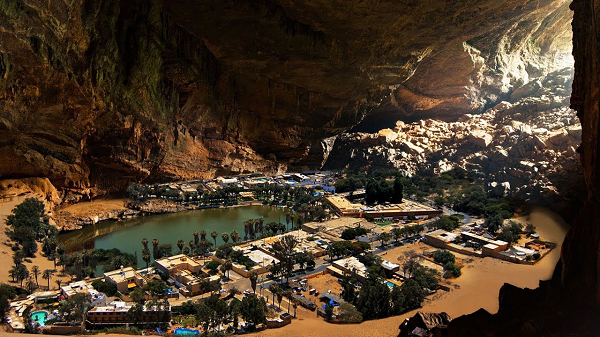Discovering the Majestic Underground Cities in The World

the Q Family Adventures
Beneath the bustling streets and sprawling landscapes of our world lie cities that tell tales of human ingenuity, resilience, and history. These underground metropolises, carved out of rock and earth, have served as sanctuaries from invaders, shelters from extreme climates, and hubs of ancient civilizations. From the intricate caves of Cappadocia in Turkey to the wartime tunnels of Cu Chi in Vietnam, these subterranean cities offer a glimpse into a life below the surface, where entire communities thrived in darkness. While some were born out of necessity, others stand as monumental feats of engineering and vision.
Also Read:- Savannah College of Art and Design (SCAD)
Today, these cities not only serve as historical landmarks but also as testaments to humanity’s adaptability and the lengths we go to carve out spaces of safety and community. Join us as we embark on a journey beneath the earth, uncovering the mysteries and marvels of the world’s most captivating underground cities.
From prehistoric times to the early nineteenth century, civilizations ancient or modern, all have sought defensive measures one time or the other. To attack and seek protection have always been the two major attributes of human societies. This has affected architecture significantly since the beginning. The construction of defensive city walls to secret tunnels and passages have defined ancient and medieval architecture. However, underground cities are an aspect that was undetermined until recent times. Uncovering a multitude of secrets, some of these societies were lost long ago while others are as recent as World War II.
All conforming to defensive schemes, here are ten unforeseen cities built beneath the earth:
1. Derinkuyu, Cappadocia, Turkey | Underground cities
The lunar-like region of Turkey’s Cappadocia encompasses no less than 36 underground cities, but Derinkuyu is the deepest and most impressive of all of them. The vast network of tunnels and passages belongs to the 8th century B.C. and is assumed to be a shelter to protect in times of war.
Due to this, the once-secret underground city is a self-sufficient metropolis inhabiting ventilation shafts, wells, kitchens, schoolrooms, oil presses, a bathhouse, a winery and living space for some 20,000 people in 18 storeys. The distinctive feature of Derinkuyu is the cruciform church. However, the massive city remained obscure from the world until 1963.
2. Naours, France
Located in the north of France, the underground city of Naours is another complex labyrinth of not less than 300 man-made rooms. Initially used as a quarry, it soon got transformed into a secret village underneath due to the apparent reasons of defence and refuge. Dating back to the third century A.D., it had chapels, wells, stables along with enough room for around 3000 people.
3. Wieliczka Salt Mine, Poland
Located near Krakow, the Salt mine was built in the 1200s to find the rock salt. The mine was steadily expanded over the years by the miners into 185 miles of impressive galleries, and about 3000 chambers all encompassed in nine floors. In their off duty hours, the miners used the salt crystal deposits to build the stunning chapels, chandeliers, reliefs and also a detailed replica of Da Vinci’s “The Last Supper”.
After being continuously used for around 700 years, the mine stopped producing rock salt in 2007 and now serves as a popular tourist attraction. It is also called “Underground Salt Cathedral”.
4. Petra, Jordan
Hidden amidst the red sandstone mountains in the southwestern region of Jordan, Petra is an ancient architectural marvel which was unbelievably lost until the 1800s. Settled in the 4th century B.C. by the Nabataean tribe, it was home to around 30,000 people.
Characterised by the exquisite carved out desert cliffs, it was symbolic of the Nabataean power and wealth. However, once a burgeoned trade centre, the kingdom declined around the 7th century A.D. The kingdom was annexed into Rome some centuries before its collapse and thus a clear influence of Roman architecture can be seen throughout Petra.
5. Dixia Cheng, Beijing, China | Underground cities
Spread across 85 square kilometres beneath the capital city of Beijing, it was built in the 1960s as a hideout to protect people from nuclear war. Although it was never put to use, it is said to accommodate one million people for around four months. The secret underground city independently houses schools, hospitals, granaries, restaurants, entertainment venues and even an ice skating rink all connected via a complex network of tunnels and passageways. The massive subterranean space still exists today and was recently opened as a tourist attraction.
6. Edinburgh Vaults, Edinburgh, Scotland
Built within the 19 arches of South Bridge in Edinburgh, Scotland in the late 18th century, Edinburgh Vaults are a series of chambers formed due to downward expansion. These man-made “underground” vaults were initially blooming with traders such as cobblers, taverns, smelters and whatnot but soon the deterioration began owing to the lack of proper drainage and sanitation systems. However, these lost dark, damp places were recently discovered in 1985 due to excavation.
The vaults were a result of the superstitions of the people of the city and to date, it is considered the most haunted place in the United Kingdom.
7. Burlington, England
In response to the Cold War Nuclear strike, the British government would have sought refuge in an underground bunker codenamed ‘Burlington’ spanning approximately 60 miles. Designed in the 1950s, underneath the village of Corsham, the secret underground city facilitated office spaces, cafeterias, a telephone exchange, medical facilities, sleeping quarters and an in-house BBC studio.
All of this was planned to keep the British PM and other 4000 personnel safe during any unforeseen circumstances. Although like any other, it was never used but continued to function till 1991 and finally in 2004 it was declassified.
8. Berlin Bunkers, Berlin, Germany
Eminent secrets lie beneath the now peaceful city of Berlin. Once the nucleus of World War II, Berlin has witnessed brutal war crimes and once can’t forget the Nazi concentration camps. The Berlin Bunkers were built to shelter the residents from the air raids during the war. Some of these bunkers also served as defensive shelters during the Cold War nuclear conflict.
The bunkers remained unused for the remaining part of the twentieth century until 1997 when they were rediscovered. The bunkers are an insight into the horrors of World War II and therefore now serve as museums run by Berliner Unterwelten eV.
9. Orvieto, Italy
The Italian hill town Orvieto is settled atop Volcanic rocks which accommodates the mysterious underground city. Presently famous for its white wines, the city belonged to the ancient Etruscans long ago who burrowed down to carve wells and cisterns initially. However, gradually it expanded into a subterranean maze of tunnels counting up to 1200 tunnels and galleries.
While mainly it was used to store wines, it also showed remains of the Etruscans and medieval oil presses. The underground tunnels were also recently used during World War II as bomb shelters.
10. Pilsen Historical Underground, Czech Republic | Underground cities
The city of Pilsen has a lot more to discover than its famous Pilsen Beer. Pilsen Historical Underground is a 12.5-mile web of passageways, cellars and wells built in the 14th Century. The underground city was known to be a storage space for food and beer barrels in the prehistoric era however some belief in the existence of treasure is hidden within the walls of the cellars.
Like many other underground cities, this also has been transformed into a museum and guided tours are organised to explore many exquisites such as the well-known ice cellar and the water tower.







